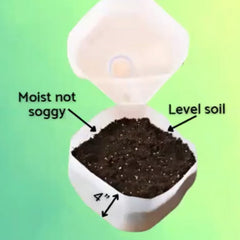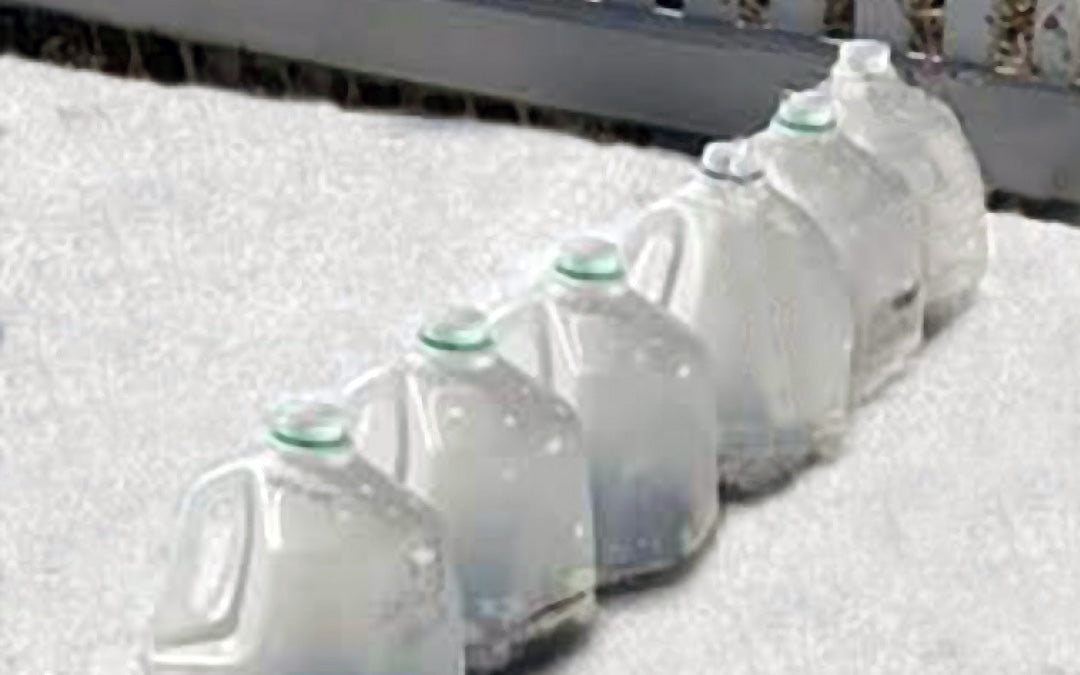I’ve been winter sowing onions outside in containers (in Zone 7) for years (here’s the how-to from 2020 https://www.neseed.com/blogs/growing-guides/winter-sowing-onion-seed) but that’s not the only seed that does well if allowed to follow Mother Nature’s rhythms. Cool season crops like spinach, kale and lettuce do great and can give you a head start without taking over your indoor space. Many perennials, herbs and even hardy annuals can also be started by this method. But what has been getting many people excited is starting wildflower mixes by winter sowing in milk jugs. Inviting the pollinators to your garden by planting more plants that encourage them to visit can seem daunting or expensive. So many varieties to choose from! Many wildflower varieties require stratification (a chilling period to initiate germination). Winter sowing lets Mother Nature do this for you. If you don’t have an area cleared and ready to winter sow seed in your garden, winter sowing in containers can get the process started. Starting seed mixes in containers in winter, and leaving them outside until late spring can be rewarding, and give you time to plan their final location. Follow along to see how easy it can be.
- Gather containers. Milk jugs, produce containers, soda bottles, plastic shoe boxes or any clear/semi-transparent container with enough room for at least 3” of soil and room for seedlings to grow at least 3” will do.

- Cut milk jug type containers in half (see diagram), leaving the top half attached at the handle like a hinge and set aside the cap.
- Wash and rinse containers well.
- Drill 5 or more ½” drainage holes in the bottom half. If your holes are larger, you can put a coffee filter in the bottom to prevent the soil from washing out.
- Fill bottom half of jug with light-weight potting soil. Seed starting soil with added compost, or any good quality soil mix will be fine. Don’t use garden soil; it can carry too many diseases which can multiply when in a container. Make sure the soil mix is moist, but not soggy, before filling the jug.
- Sprinkle the wildflower seeds lightly over the top of the mix. Wildflower seed mixes will have many different sizes and shapes. Try to keep them from touching each other but don’t worry about trying to space the seeds. Press the seed lightly into the soil and water.
- Remember to the mark the jugs with what seed you planted in each. A Sharpie marker or painter’s tape works well. You can add a popsicle stick with the variety name in the jug as a back up in case the marker wears off.
- Put the top half of the jug back in place and use duct tape to reattach. Leave
the cap off to allow for some air circulation and moisture to enter/escape.

- Place the jugs outside in a protected area with part sun and out of the wind. Protect them from animals by anchoring or boxing them together. Four or six gallon sized milk jugs fit nicely into a crate.
- Be patient! But peeking is allowed! Occasionally check to make sure the soil is still moist by lifting the jugs. If they feel light, water them from the bottom by placing the jugs in a pan of water for half an hour and return them to the protected area. As the season warms, the seeds will begin to germinate and grow.

- If it snows, don’t worry. But remove the duct tape and open the top if the
weather becomes very warm in the spring to prevent overheating. - When the seedlings are 2-3” tall or have at least 3 sets of true leaves, they are
big enough to move into the garden. Allow the soil to dry out for a few days and plan to transplant on a cloudy day. Since these are mixed seedlings, cut the entire ‘block’ of soil in each jug into 6 squares like brownies. Each square will have a few different varieties and can be planted as a clump into the garden.
- Dig each hole in the garden to the same depth as the soil in the jugs. Add a handful of compost and fill the hole with water BEFORE you add the square of seedlings. This gives your seedlings a great start! Fill the hole with soil, trying not to bury the seedlings any deeper than they were growing in the jug.
- Planting wildflowers in these clumps helps pollinators find them.

Special Thanks to Skycrest Studios for the use of this graphic

